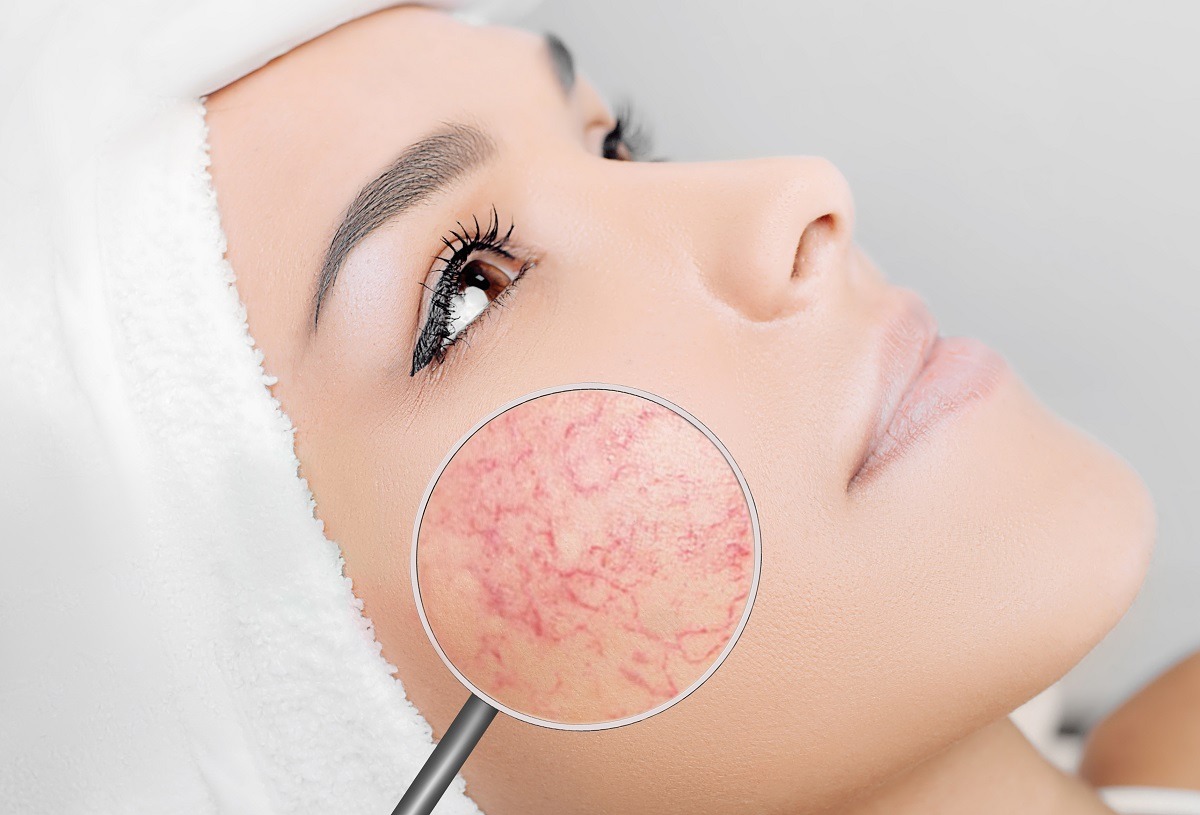
Couperose: what is it?
Couperose is a form of chronic dermatitis of a benign nature that predominantly affects the face resulting in a ‘red cheek’ appearance
In addition to the cheeks, the nose, forehead, cheekbones and sometimes the sternal region may be affected.
What are the symptoms?
Couperose presents with the appearance of redness, warm skin and evidence of small dilated blood capillaries on the wings of the nose (sides of the nose), cheeks, cheekbones and forehead.
Subjects may complain of a burning sensation or intense heat; some of them also report the appearance of these symptoms at the same locations during sudden temperature changes or intense emotions.
What are the causes?
To date, the causes of this dermatitis are not entirely clear.
A certain familial predisposition to its development has been identified, aggravated by other factors including stress, exposure to the sun, sudden changes in temperature, vitamin deficiencies and excessive consumption of stimulating foods and spices.
Hormones may also play a significant role, with women being the most affected by this disorder.
Taking oral contraceptives or the pre-menopausal period are associated with the appearance of rosacea.
Finally, both oral and topical cortisone therapies are among the risk factors.
How is it diagnosed and which doctor to contact?
Diagnosis is made by a simple objective test by the doctor.
The specialist to whom one should refer specifically is the dermatologist, to whom it would be advisable to present oneself cleansed and with cleansed face for an appropriate evaluation.
Couperose: possible complications
Fortunately, rosacea is not a serious condition and in most cases is not associated with major consequences for the sufferer.
In some patients, however, rosacea is the phase preceding the appearance of acne rosacea, which is characterised by the presence of papular-pustular lesions and telangiectasias on the cheeks, forehead and nose.
In some cases, rosacea has an ocular involvement associated with symptoms such as redness, dry eyes, itching, swelling of the eyelids, increased sensitivity to light and accentuated tearing.
Couperose: can it be prevented?
A number of precautions can be taken for sufferers of this disorder:
- Adequate diet, avoiding exciting substances.
- Cleansing the skin with gentle products and paying particular attention to the use of aggressive cosmetics.
- Avoid tanning lamps or exposure to excessively hot (e.g. saunas) or cold temperatures.
Couperose: what are the treatments?
As already mentioned, couperose is in most cases a cosmetic problem.
In cases where it is particularly disabling for the sufferer from a psychological point of view, soothing creams can be used.
However, there are no cure-all treatments and unfortunately, once it has appeared, rosacea cannot be eliminated 100%.
In some cases, laser or diathermocoagulation can be used.
Are there natural remedies for rosacea?
You can use compresses or natural creams based on chamomile, which soothe the affected area and flush it out.
Remedies based on mallow, calendula and liquorice are also excellent, as are creams containing active ingredients from plants such as bilberry, centella asiatica, butcher’s broom and horse chestnut.
Cosmetic treatments
Although they cannot play a therapeutic role as they are cosmetics and not drugs, cosmetics used for rosacea can contain ingredients that can have a soothing and redness-reducing activity, or protect against UV radiation.
Read Also
Emergency Live Even More…Live: Download The New Free App Of Your Newspaper For IOS And Android
Remedies And Causes Of Couperose On The Face
How To Recognise And Treat Melanoma
Moles: Knowing Them To Recognise Melanoma
Skin Melanoma: Types, Symptoms, Diagnosis And The Latest Treatments
Melanoma: Prevention And Dermatological Examinations Are Essential Against Skin Cancer
Contact Dermatitis: Patient Treatment
Dermatitis: The Different Types And How To Distinguish Them
Dermatosis And Itching In Pregnancy: When Is It Normal And When To Worry?
Stress Dermatitis: Causes, Symptoms And Remedies
Infectious Cellulitis: What Is It? Diagnosis And Treatment
Contact Dermatitis: Causes And Symptoms
Skin Diseases: How To Treat Psoriasis?
Pityriasis Alba: What It Is, How It Manifests Itself And What Is The Treatment
Atopic Dermatitis: Treatment And Cure
Psoriasis, A Disease That Affects The Mind As Well As The Skin
Allergic Contact Dermatitis And Atopic Dermatitis: The Differences
Adverse Drug Reactions: What They Are And How To Manage Adverse Effects
Symptoms And Remedies Of Allergic Rhinitis
Allergic Conjunctivitis: Causes, Symptoms And Prevention
What Is And How To Read The Allergy Patch Test
Eczema Or Cold Dermatitis: Here’s What To Do
Psoriasis, An Ageless Skin Disease
Clinical Manifestations Of Atopic Dermatitis
Dermatomyositis: What It Is And How To Treat It
Atopic Dermatitis: Symptoms And Diagnosis


